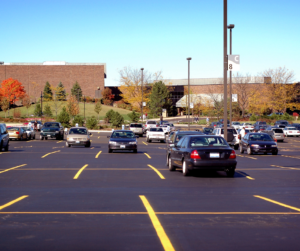 With the extreme winter weather experienced nationwide this past year, this spring would be an excellent time to conduct an inspection of your church’s buildings and grounds. This is especially important with the Easter holiday approaching and the increased number of people who will be attending services and activities during that time. The following items should be inspected to ensure that they are in good condition:
With the extreme winter weather experienced nationwide this past year, this spring would be an excellent time to conduct an inspection of your church’s buildings and grounds. This is especially important with the Easter holiday approaching and the increased number of people who will be attending services and activities during that time. The following items should be inspected to ensure that they are in good condition:
- Parking Lots and Walking Surfaces – Because slips and falls are a leading cause of injuries at church, make sure that building entrances and parking areas are well lit and that sidewalks and parking lots are free from uneven surfaces, holes, and depressions. It’s not unusual to find potholes or damage to parking stops, speed bumps, or curbs after a hard winter. Make any necessary repairs.
- Drainage – To prevent water damage, ensure your drainage system is working correctly. To do this, you should inspect gutters, downspouts and eaves to make sure they are clear of debris and functioning properly. All downspouts should extend at least six feet away from buildings and in-ground pipes should be checked for proper drainage.
- Building Surface – To ensure that your building is in good shape, inspect the tuck-pointing on masonry walls annually, and make sure that siding, trim, caulking around windows and doors, and paint are all in satisfactory condition. You also should look for any visible structural hazards, such as cracks in the walls and bricks that may need to be addressed.
- Roof and Trees – Inspect the roof for missing or damaged shingles, and inadequate flashing or caulking around vents and chimneys. Any evidence of water damage, including rotten wood, damaged walls or stains on interior ceilings, should be inspected and addressed as well. Consider hiring a licensed and insured professional to make any needed roof repairs. Trees also can damage church property if they are not maintained properly. Have tree limbs trimmed away from wires and buildings, and have all trees inspected for rot and age, and removed by a professional if necessary.
By conducting regular inspections, making repairs and taking other corrective action promptly will help protect your church’s physical property, as well as your congregation members and workers. Spring is a great time to do such an inspection. To find sample self-inspection checklists, visit the SafeChurch Resource Library; click the Facility Safety category option; and then click the Building and Grounds option.
Originally posted on GuideOne
This material is for informational purposes only. It is not intended to give specific legal or risk management advice, nor are any suggested checklists or action plans intended to include or address all possible risk management exposures or solutions. You are encouraged to retain your own expert consultants and legal advisors in order to develop a risk management plan specific to your own activities.
ChurchInsure is a division of Anchor Insurance Agencies specializing in the unique insurance and risk management needs of religious institutions. Visit our website to learn how we can serve you at anchor-insurance.com/churchinsure.


